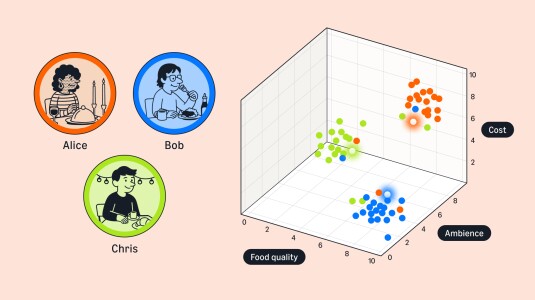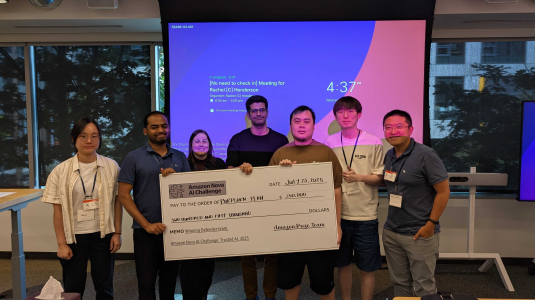Customer-obsessed science


Research areas
-
September 11, 2025The language AI agents might speak, sharing context without compromising privacy, modeling agentic negotiations, and understanding users’ commonsense policies are some of the open scientific questions that researchers in agentic AI will need to grapple with.
-
Featured news
-
Retrieval and ranking lie at the heart of several applications like search, question-answering, and recommendations. The use of Large language models (LLMs) such as BERT in these applications have shown promising results in recent times. Recent works on text-based retrievers and rankers show promising results by using bi-encoders (BE) architecture with BERT like LLMs for retrieval and a cross-attention
-
ICDE 20242024How can we effectively generate missing data transformations among tables in a data repository? Multiple versions of the same tables are generated from the iterative process when data scientists and machine learning engineers fine-tune their ML pipelines, making incremental improvements. This process often involves data transformation and augmentation that produces an augmented table based on its base version
-
ICRA 20242024Robotic manipulation is a key enabler for automation in the fulfillment logistics sector. Such robotic systems require perception and manipulation capabilities to handle a wide variety of objects. Existing systems either operate on a closed set of objects or perform object-agnostic manipulation which lacks the capability for deliberate and reliable manipulation at scale. Object identification (ID) unlocks
-
Krylov cubic regularized Newton: A subspace second-order method with dimension-free convergence rateAISTATS 20242024Second-order optimization methods, such as cubic regularized Newton methods, are known for their rapid convergence rates; nevertheless, they become impractical in high-dimensional problems due to their substantial memory requirements and computational costs. One promising approach is to execute second-order updates within a lower-dimensional subspace, giving rise to subspace second-order methods. However
-
Predicting customer preferences for each item is a prerequisite module for most recommender systems in e-commerce. However, the sparsity of behavioral data is often a challenge to learn accurate prediction models. Given millions of items, each customer may only be able to interact with a small subset of them over time. This sparse behavioral data is insufficient to represent item-customer and item-item
Academia
View allWhether you're a faculty member or student, there are number of ways you can engage with Amazon.
View all






























